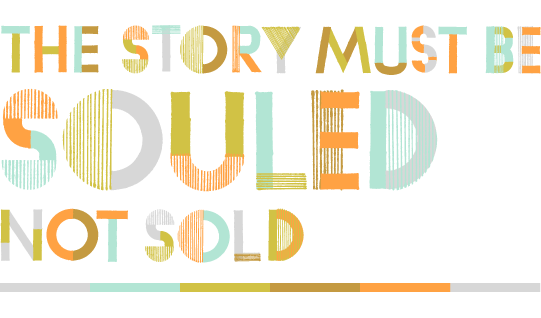
A couple of weeks ago, our managing partner Voltaire Miran was kind enough to arrange a visit from Caleb Paull of Roosevelt University, formerly of the Center for Digital Storytelling. Caleb came out to the mStoner office and presented to a small group of us, sharing some of the basics of good storytelling and showing an example of an excellent student piece produced in one of his storytelling workshops. His presentation evolved into an extended conversation on how to apply good storytelling techniques to profile or interview content for higher education.
Before I finish this story, let me give you a bit of background. As of about 6 months ago, I was given editorial responsibilities over the clients I serve as Creative Director. For me, the desire to improve profile or interview content on web sites is driven by the fact that this kind of content is nearly ubiquitous on all sites in higher education, but it’s not always great material. I want the sites we produce to be the best, so I started by trying to think of ways to improve interview content we’re doing.
Around the same time this was happening, Voltaire was becoming more interested in digital storytelling, and it seemed like a good opportunity to turn some of the profile content we generate for clients into more story-based writing. I don’t think every person necessarily makes an incredibly interesting avatar-of-the-institution profile, but I do believe every single person has a few really interesting stories in them. I believe that by making typical profile content more centered on a single story from the person’s life, you can open the door to doing more profiles (since you don’t necessarily have to choose the most well-rounded students to be avatars of the school) and generate more interesting content.
Cut back to early May of ‘09 (or the first paragraph of this blog post… your preference), sitting upstairs in our comfortable office lounge on plush couches, talking to Caleb, the digital storyteller, about these ideas: what can we do, as a company, to generate the most compelling interview content? I’m paraphrasing at this point, but here are some of the words of wisdom we heard from Caleb.
Good stories deal with change. This is a writing basic that is easily forgotten. Caleb stated that the most compelling stories deal with real change, or with a changed perspective. By asking a person broad questions, and by identifying natural storytellers, you are more likely to discover dynamic stories. The broad questions, “What has changed you the most?” or “Who has had the biggest experience on your impact here?” open the door for a subject to tell a story that has real meaning to them.
Don’t force a personal story to have a specific point. This, in Caleb’s opinion, is a recipe for losing emotional strength. He said that most stories start with a “kernel,” a small, specific detail, a photograph, a sentimental object, or something of that nature. The story then meanders around before arriving at a destination. He pointed out that most storytellers, when relaying a story for the first time, don’t even know where that destination is when they begin. So, let’s apply that philosophy to higher ed profile content: when you start out by trying to prove that a student represents a branding attribute of the school, you’re forcing the story to arrive at a destination, or specific point. Caleb’s opinion is that a good translation of a story creates a glimpse of a storyteller that a reader would really want to meet… and that’s way more emotionally effective than trying to use a student to illustrate a specific branding attribute.
Make sure the storyteller “owns” the story. When Caleb hears stories that sound too cookie cutter, he says he often asks the person, “How is that your story?” By asking people to make the story specific to themselves, he says, they often fill in interesting and unique details. These details are often where the sense of voice comes throughone of the basics of good digital storytelling.
Untie the story a little if it wraps up too neatly. Having done several workshops with immigrants, Caleb said he often heard stories ending with, ”…and then I got to America, and everything was alright.” His response, “Really? You haven’t struggled since then?” His point was that very seldom do real stories end with full resolution, and when they do, the person usually isn’t being 100% honest with themselves. By challenging a subject to examine his or her ending if it sounds a little clich, a story can become more authentic, and thus more interesting.
Make sure it’s got soul. This last one’s my favorite because it puts a unique spin on authenticity, a buzz word we’ve all heard many times before. Caleb said, “The authenticity of a story is measured by how much the audience and the storyteller believe that what the storyteller is saying has soul.” While Caleb didn’t necessarily exactly enunciate what soul is, his statement struck the intuitive part of my brain as right on the money. Soul in this context seems to be a way of describing emotional truth. Only if both the speaker and the audience believe in the words being communicated does the message really resonate. Another thing he said about authenticity was “Stories must be told, not sold.”
These last two statements were the inspiration for the title graphic of this post! As I tackle more editorial responsibilities, I intend to take Caleb’s words to heart… looking for ways of adding more of the elusive soul to the stories we are telling.